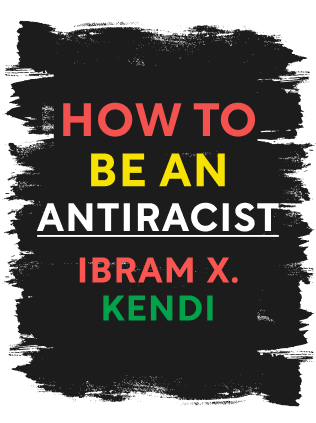

This article is an excerpt from the Shortform book guide to "How to Be an Antiracist" by tIbram X. Kendi. Shortform has the world's best summaries and analyses of books you should be reading.
Like this article? Sign up for a free trial here .
Are you in an antiracism book club? Are you looking for suggestions from Ibram X. Kendi?
How to Be an Antiracist is all about the history of racism and the principles of antiracism. In the book, author Ibram X. Kendi references many books that cover key principles. You can use those references as a reading list for an antiracism book club.
Keep reading for Ibram X. Kendi’s book suggestions for antiracism book club.
Reading About Black-on-Black Racism
The first instance of written Black-on-Black racism comes from a book written in 1526. The author, a Morrocan Moor, was kidnapped in Africa and enslaved. He was given to the pope, who converted him and freed him. The book included lines about Black people behaving like animals. An antiracism book club could understand this issue by reading historical books such as these.
In 1657, Richard Ligon, an Englishman, wrote a story he may have made up about slaves in Barbados. A group of slaves tell their master about a planned revolt and when their master tries to reward them, they refuse the reward, because they consider divulging the revolt to be their duty—these Black slaves believed Black people should be enslaved.
Antiracism Book Club Choices Related to Class Racism
Communists or socialists, while they’re not capitalist, aren’t necessarily antiracist. For example, in 1901 the Socialist Party of America wouldn’t take an anti-lynching position because it didn’t want to lose racist White supporters.
In the 1920s, Writer W.E.B. Du Bois started reading Marx, saw that the Great Depression had a larger effect on Black than White poor people, saw that the New Deal wasn’t helping the inequity, and wrote about antiracist anticapitalism, inspiring others to start looking into the divides between class and race.
Black sociologist Kenneth Clark addressed the culture of poverty in 1965 in his book Dark Ghetto using the oppression-inferiority thesis. In earlier times, people thought slavery or segregation were responsible for bad Black behavior and inferiority. Clark wrote that now poverty and “ghetto” life were responsible. Kenneth Clark was aware of racist policies in existence at the time, but he subscribed to class racism. He thought that because he had escaped the ghetto and become wealthy, Black people who hadn’t were inferior, and their inferior culture kept them in poverty.
Antiracism Book Club Suggestions on Queer Racism
Racism and homophobia have been related throughout history. In 1897, Havelock Ellis, a British physician, popularized the word “homosexual” in his first book about sex and wrote that sex was related to race. He was a biological racist and thought that there were biological differences between heterosexual and homosexual people as well. He didn’t condemn homosexuality—he thought it was a “congenital physiological abnormality,” not a crime—but he did, however, believe that all people of color are born criminals. To understand the history of queer racism, you can include this book in your antiracism book club.
At the time, racist doctors were comparing the clitoris of White and Black women. White women supposedly had “bound together” clitorises, which meant they were more civilized. The “free” clitoris found in Black women meant they were wild and animal-like. These doctors suggested that the “free,” or abnormally prominent, clitoris was related to homosexuality.
Readings on Anti-White Racism
Similar to how White people made up creation stories and justifications for the inferiority of other races, non-White people did the same thing towards White people. There are four incorrect theories about how White people were created and your antiracism book club can read about them:
Theory #1: Created by an evil scientist. Elijah Muhammad, who led the Nation of Islam, wrote a book called Message to the Blackman in America in which he explained how White people came into being. Muhammad believed that 6,000 years ago, the world was all Black. Yakub, an evil Black scientist, was exiled. He wanted to get revenge on society so he created White people. When Yakub’s White people invaded Black society, Black authorities imprisoned them in caves, but Moses released them when he “lifted up the serpent in the wilderness.” Moses then taught White people how to rule, which ultimately led to the inequities between Black and White people today.

———End of Preview———
Like what you just read? Read the rest of the world's best book summary and analysis of Ibram X. Kendi's "How to Be an Antiracist" at Shortform .
Here's what you'll find in our full How to Be an Antiracist summary :
- What racism is and how it evolved
- How you might have subtle racist thoughts and not even be aware of them
- Why being "not racist" isn't good enough






